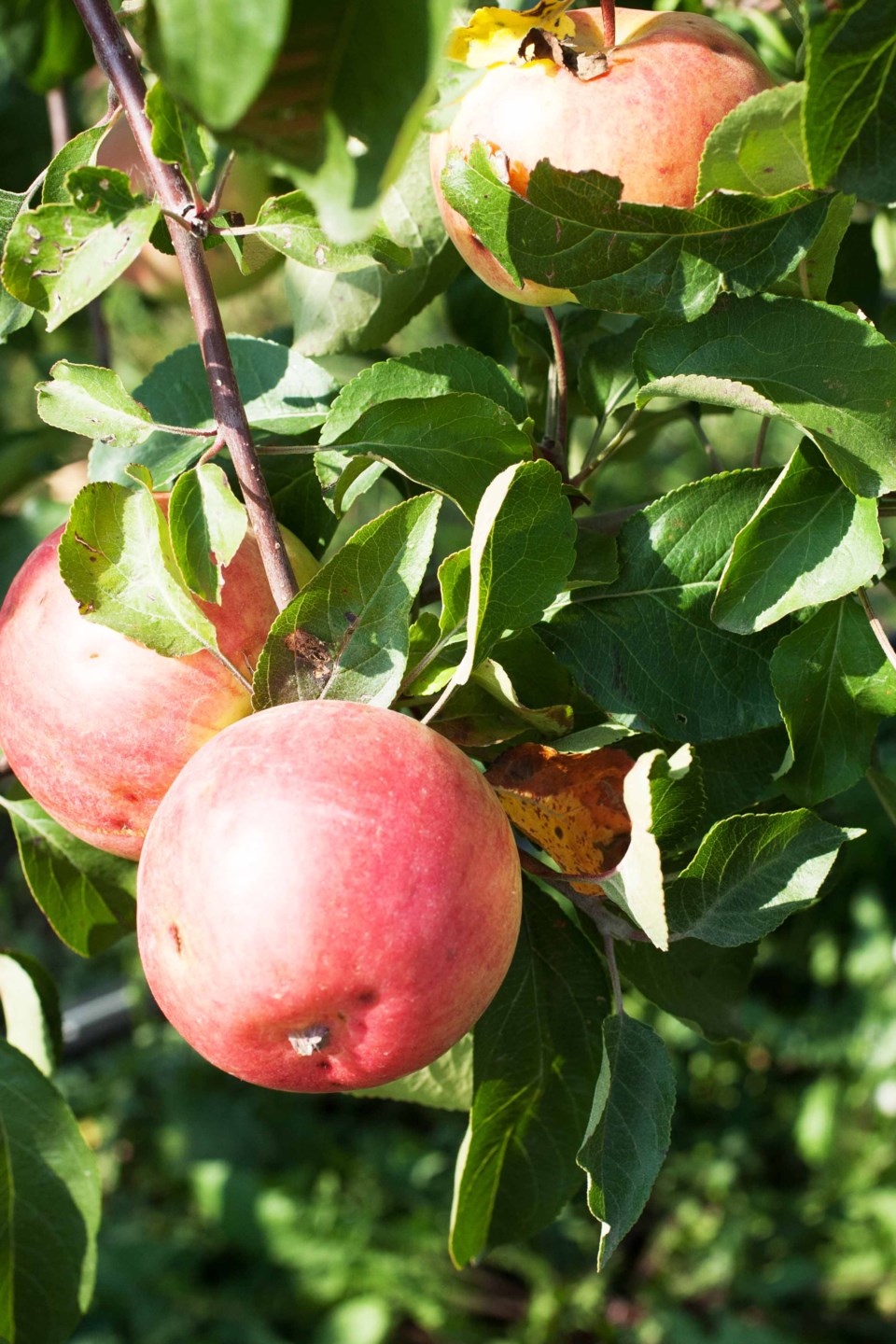There is nothing more delectable than biting into an apple that you have grown yourself. There is nothing worse than to find half a worm in the apple you just took a bite out of. Protein aside – it is just not a good feeling.
One of the major pests in apples is the apple maggot (Rhagoletis pomonella). It is a relatively new pest as I remember the day when there were no apple maggots here and I am not that old. However, we live in a mobile world as people as well as from the perspective of plants. We readily import plant material from everywhere so I guess we should not be too surprised when we see new pest problems. Like any critter problem, it is essential to understand the life cycle in order to gain control. When we notice the apple maggot is not when it is in the adult form but in the larval stage of development. When you find an ugly white grub-like thing in your lovely apple – then you recognize there is a problem. The adult form is a fly that flits around your apple tree during the spring bloom. It is then that marks the beginning of the problem. Eggs are laid into the developing fruit and later – as the fruit sizes up the larvae tunnel from the inside. Tunnels that are distinct become evident leaving the fruit less than attractive to our palette.
Fruit that is not palatable often ends up unpicked and then falls to the ground under the tree. This allows the life cycle to continue as the maggots will overwinter as pupae in the soil underneath your tree. In spring the life cycle continues with new adults hatching out to lay more eggs in your developing fruit.
With any pest problem – knowing the life cycle is the first step. Then you know when it is going to be effective to try to control the problem. The next step is looking for a product that is registered to control the problem on that specific plant. In Canada, we have great regulations to ensure the safety of both you and the food that is produced. It is never advisable to use a product that is not registered and therefore tested for that problem on that plant. Once you find the product that is registered it is important to follow the manufacturer guidelines. Remember if the product will kill a bug it could also have an effect on you.
One other consideration is that this pest infects the fruit at the blossom stage. When fruit trees blossom they do so in order to be pollinated and in turn, produce fruit. If you are madly spraying your tree and killing all the pollinators (the bees) you won’t have to worry about apple maggots as you won’t have any fruit. So, treat the problem carefully. If you do have to spray, then choose to spray when the bees are less active. For apple maggot, it is best to spray just as the blossoms are opening and then again when the petals are falling. This will give you control when there is less risk to the pollinators. A product like permethrin (Ambush) can be sprayed at lower temperatures so is therefore less risk to bees. It is also essential to keep things clean. Ensure you pick up all the fruit that falls to the ground and dispose of it far away from your apple tree to help break up that life cycle.
Hanbidge is the Lead Horticulturist with Orchid Horticulture. Find us at www.orchidhort.com; by email at [email protected]; on Facebook @orchidhort and Instagram at #orchidhort. Tune into GROW Live on our Facebook page https://www.facebook.com/orchidhort or check out the Youtube channel GROW https://www.youtube.com/channel/UCzkiUpkvyv2e2HCQlFl0JyQ?




